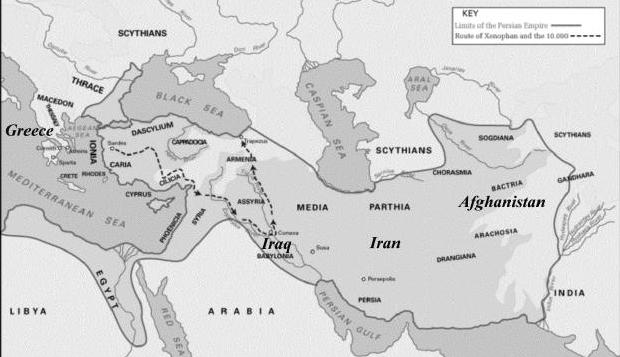OLLI Workshop: History of the Middle East - Fall 2012
Leader: Theo Pavlidis (t.pavlidis@ieee.org)
Handout No. 1 - September 24, 2012
Topic of the First Meeting: The Persian Empire, its wars with the Greeks, its conquest by Alexander the Great, and the adoption of the Persian political and religious concepts, first by the Greeks, and then by the Romans. The most lasting legacy of the Persian Empire is the concept of state religion that must be adhered to by all the citizens, unless they are explicitly allowed to practice another faith. While the specific theology (Zoroastrianism) did not survive, the administrative structure of (the equivalent of) bishops was adopted by Christianity and later by Islam.
Visuals for First Meeting

Map of Persian Empire from ancienthistory.about.com based on a map prepared by the West Point history department. (Full link in Chapter 1.)
| Wedge Attack: The Greek strategy that defeated the Persians who never figured out how to defend against it. (Why?) | |
 |
Far Left: Successful wedge attack. The center of the enemy line breaks and the flanks do nothing. Near Left: Successful defense against the wedge. The center retreats in an orderly way and the flanks encircle the attackers. This type of defense against the wedge is shown beautifully in Eisenstein's movie "Alexander Nevsky". (The battle on the ice.) |